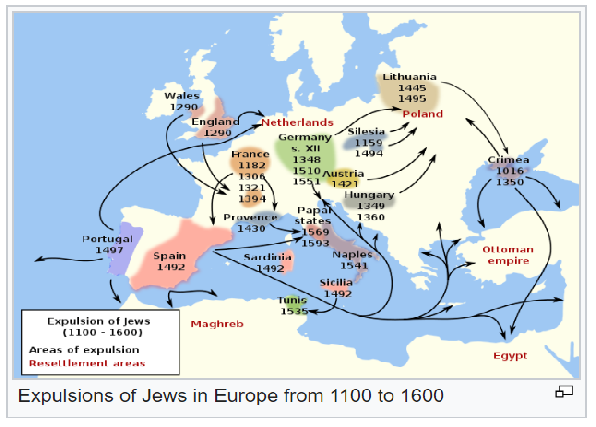


The Assyrians, Babylonians, and Romans all took Jewish captives to their respective nations. ‘From at least the time of the fall of Jerusalem (586 BC), and possibly even earlier, there were large Jewish communities living outside Palestine’ (Bray 1996: 53). During the inter-testament times and onward, Jewish communities dispersed in countries across the civilized world. ‘The ancient world was characterised by continued movements of peoples’ (DeRidder 1975:59). Thus the meaning of diaspora evolved to cover all the Jews who lived outside their original homeland. After the destruction of Jerusalem in 70 AD, the Jews did become a people without a home. The Hebrew terms for diaspora translated in the Septuagint (LXX) “all have the sense of the process of ‘leading away, deportation, or exile, or of the state of those led away, deported or exiled'” (De Ridder 1975:215). In Germany the term ‘is used of members of any religious body living as a minority among those of other beliefs’ (Cross 1974:399). Oxford’s Concise Dictionary defines ‘diaspora’ as the ‘dispersion of the Jews among the Gentiles mainly in the 8-6th Century BC’ (Moore 1997:364). The term ‘diaspora’ means the scattering of the people of God (the Jews) ‘in the midst of a hostile environment’ (De Ridder 1975:215). It then looks at the contemporary Asian church’s mission vision and how this might correspond with the Asian Christian Diaspora in Australia and how they can become a greater force of ‘new’ missionaries in the world today. It analyses the Apostle Paul and his missionary bands’ strategy of visiting the Diaspora synagogues as a base for their ministry. This paper analyses the characteristics of the biblical Jewish Diaspora and the Septuagint Scriptures and synagogues that were important to them.


 0 kommentar(er)
0 kommentar(er)
